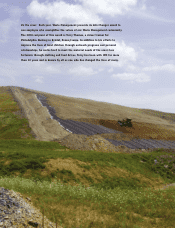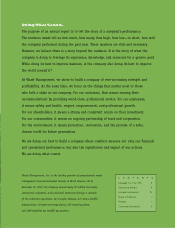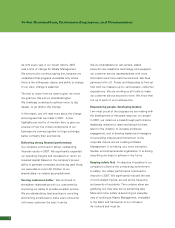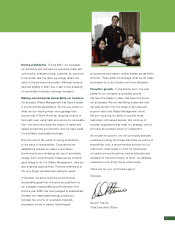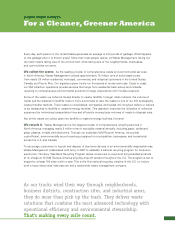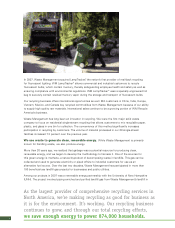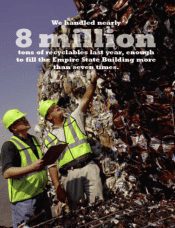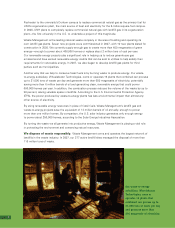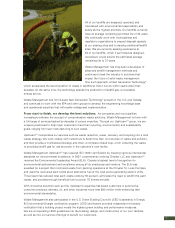Waste Management 2007 Annual Report Download - page 10
Download and view the complete annual report
Please find page 10 of the 2007 Waste Management annual report below. You can navigate through the pages in the report by either clicking on the pages listed below, or by using the keyword search tool below to find specific information within the annual report.
Rochester to the university’s Durham campus to replace commercial natural gas as the primary fuel for
UNH’s cogeneration plant, the main source of heat and electricity for the 5-million-square-foot campus.
In 2008, UNH plans to completely replace commercial natural gas with landfill gas in its cogeneration
plant—the first university in the U.S. to undertake a project of this magnitude.
Waste Management is the leading national waste company in the area of building and operating its
own landfill gas plants. Seven new projects were commissioned in 2007, with 10 new plants slated for
construction in 2008. We currently supply enough gas to create more than 450 megawatts of green
energy—enough to power about 400,000 homes or replace about 2 million tons of coal per year.
Our renewable energy projects play a significant role in helping us to reduce greenhouse gas
emissions and have earned renewable energy credits that can be sold to utilities to help satisfy their
requirements for renewable energy. In 2007, we also began to develop landfill gas plants for third
parties such as municipalities.
Another way that we help to conserve fossil fuels is by burning waste to produce energy. Our waste-
to-energy subsidiary, Wheelabrator Technologies, owns or operates 16 plants that combined can process
up to 21,000 tons of waste per day and generate more than 650 megawatts of electricity, potentially
saving more than 6 million barrels of oil and generating clean, renewable energy that could power
600,000 homes per year. In addition, the combustion process reduces the volume of the waste by up to
90 percent, saving valuable space in landfills. According to the U.S. Environmental Protection Agency
(EPA), the power produced by waste-to-energy plants has less environmental impact than almost any
other source of electricity.
By using renewable energy resources in place of fossil fuels, Waste Management’s landfill gas and
waste-to-energy projects save the equivalent of 13 million barrels of oil annually, enough to power
more than one million homes. By comparison, the U.S. solar industry generates only enough energy
to power about 250,000 homes, according to the Solar Energy Industries Association.
By turning the waste we all generate into productive energy, Waste Management is playing a vital role
in protecting the environment and conserving natural resources.
We dispose of waste responsibly. Waste Management owns and operates the largest network of
landfills in the waste industry. In 2007, our 277 active landfill sites managed the disposal of more than
116 million tons of waste.
Our waste-to-energy
subsidiary, Wheelabrator
Technologies, owns or
operates 16 plants that
combined can process up to
21,000 tons of waste per day
and generate more than
650 megawatts of electricity.
8


